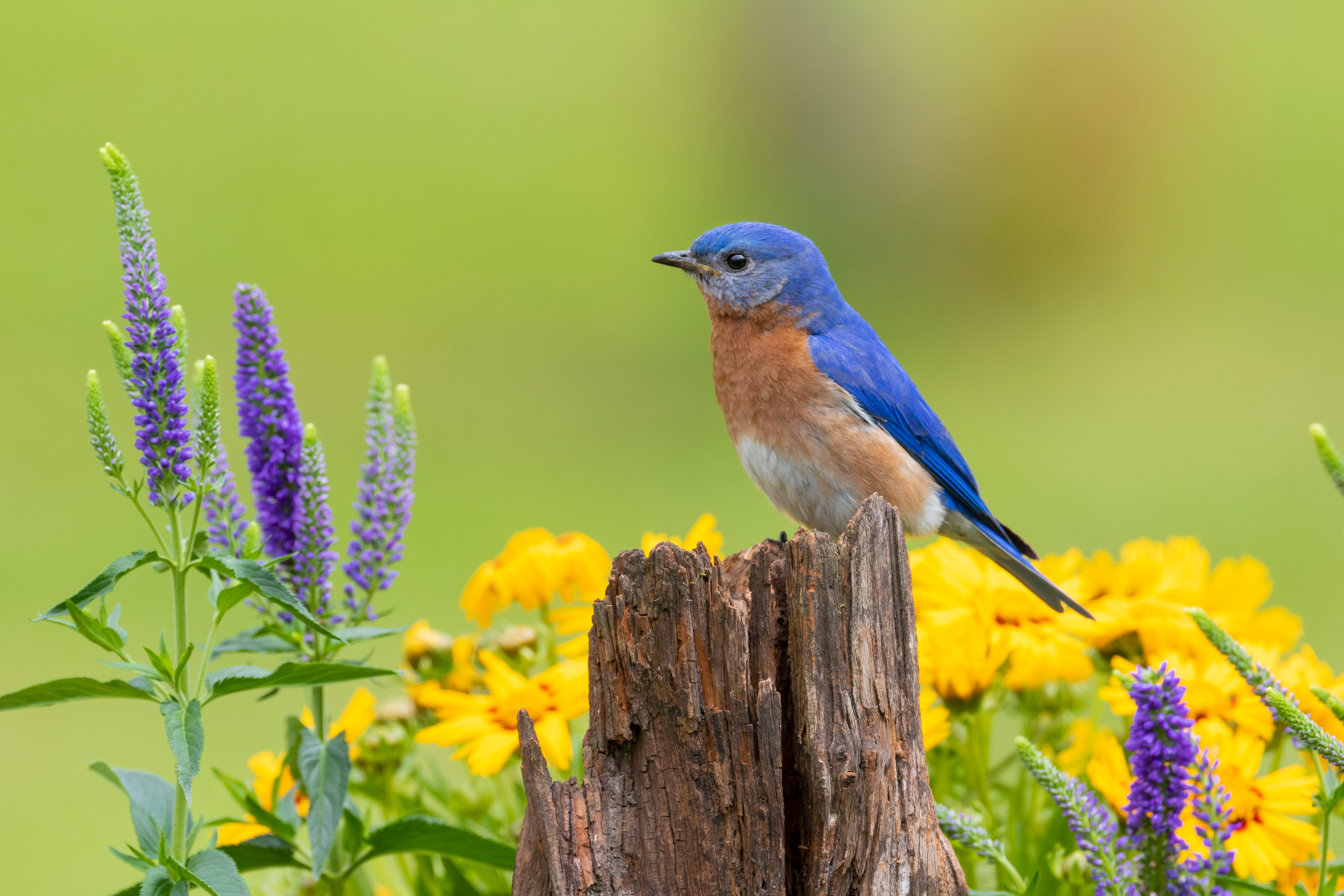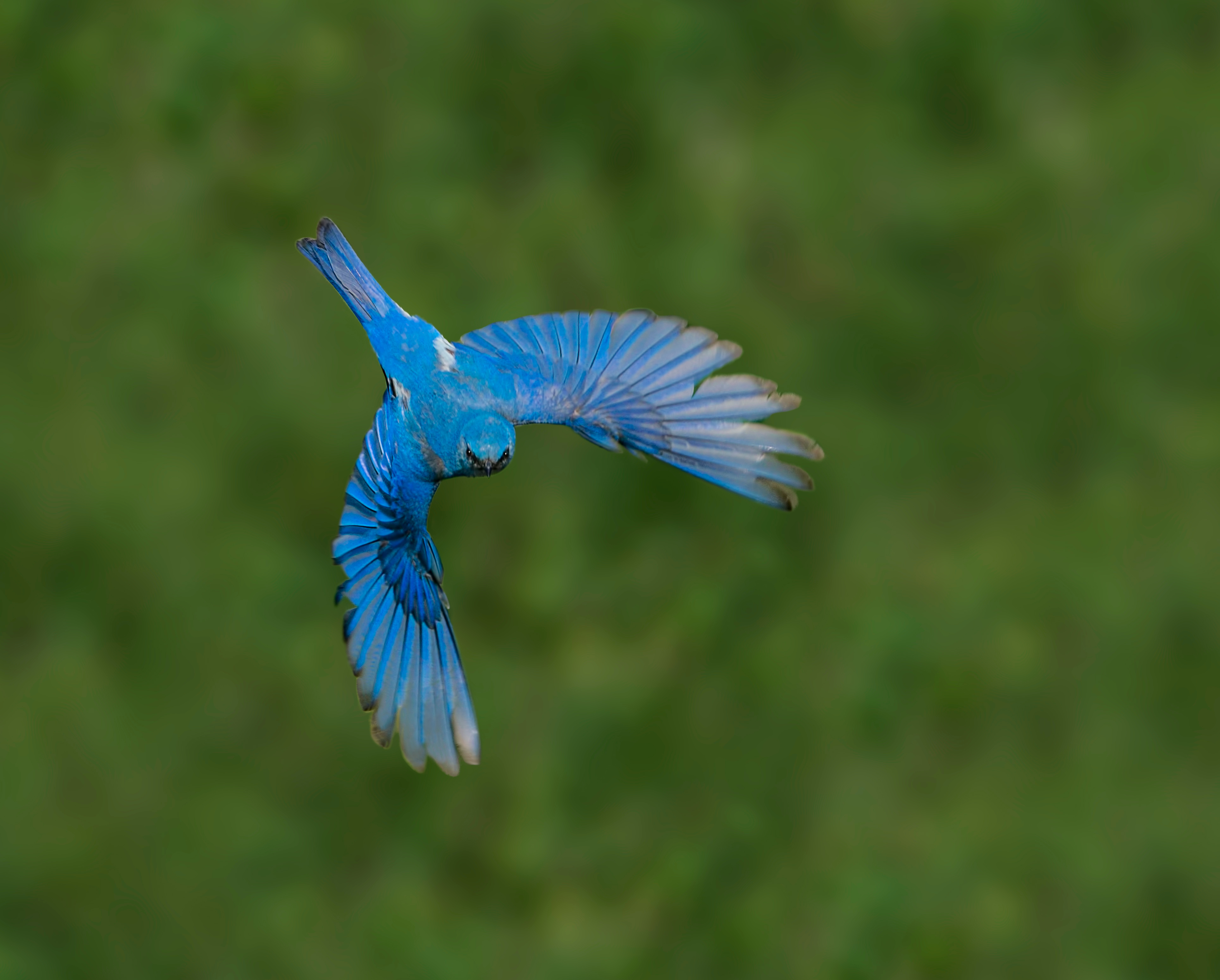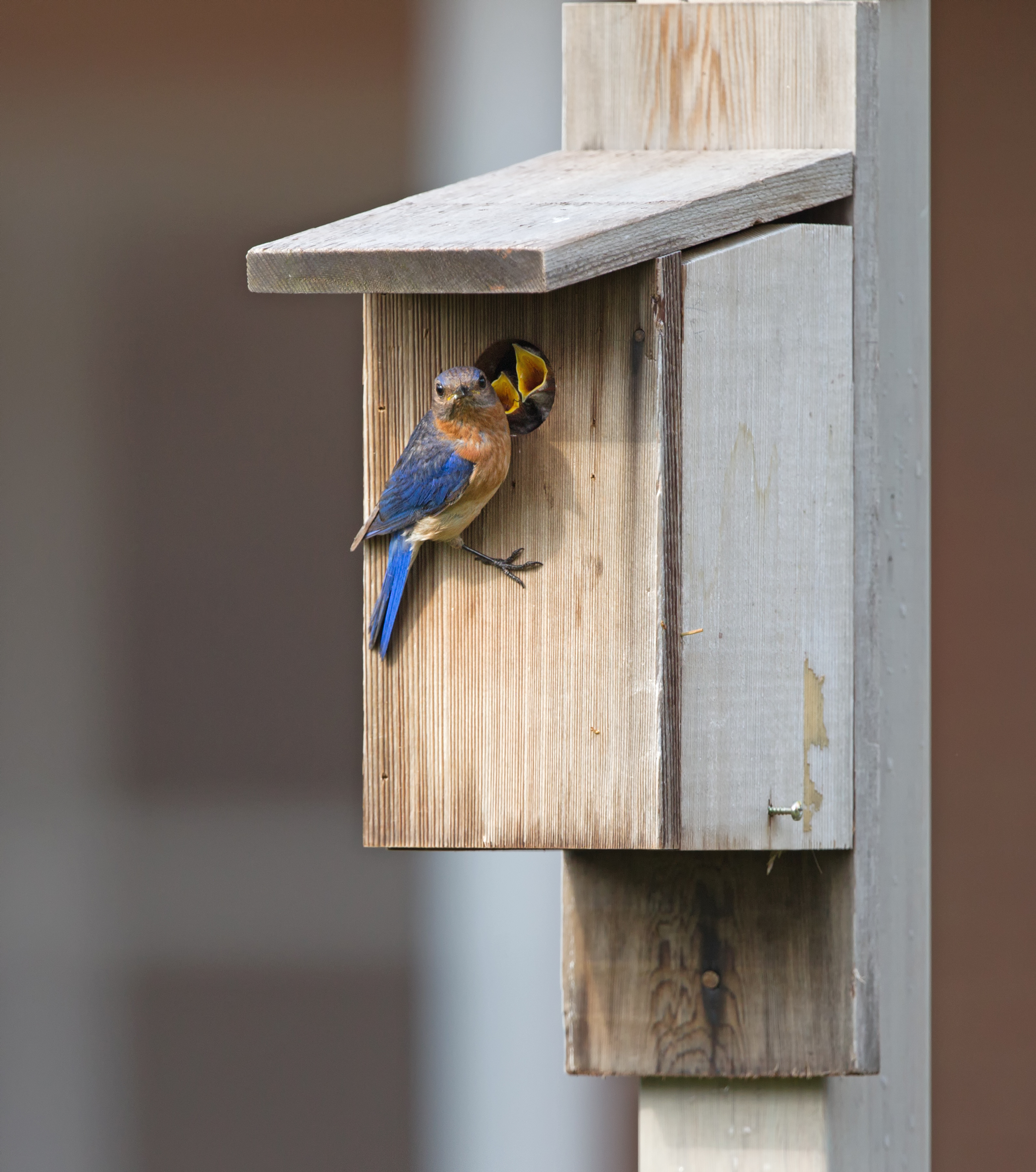Bluebird is any of three species of North American songbirds known for their brilliant blue feathers. Each species has its own characteristic shades of blue, though this shade varies with light conditions. All three species measure about 6 to 7 inches (15 to 18 centimeters) long and have black beaks and legs.
The eastern bluebird is found east of the Rocky Mountains from southern Canada to northern Nicaragua. The adult male has deep blue feathers on the head, back, tail, and wings. The breast and throat are chestnut-colored, and the belly is white. The female resembles the male but has duller plumage.


The western bluebird resembles the eastern bluebird, except that it has a blue throat and a chestnut-colored upper back. The western bluebird ranges from southern British Columbia to south-central Mexico.
The mountain bluebird lives in the mountains of western North America from central Alaska to northern Mexico. The adult male is deep sky-blue with a paler throat and breast, and a white belly. The female is brownish with pale blue wings and tail.
The life of bluebirds.
Bluebirds eat a variety of insects, including grasshoppers, beetles, flies, and especially caterpillars. In winter, bluebirds also eat berries. Bluebirds use several techniques to hunt for food, including hovering over fields and searching from perches, such as fence posts and tree limbs. Eastern and western bluebirds mostly search from perches. Mountain bluebirds hover a great deal.
Bluebirds live in open forests, at forest edges, and in natural grasslands. They also live in pastures, orchards, and parks. Bluebirds build nests in protected spaces, such as old woodpecker holes and birdhouses. The nest is made of coarse grasses and lined with softer materials, such as feathers and fine grasses. The female bluebird does most of the nest building.
Loading the player...
Eastern bluebird

The female lays three to seven pale blue or white eggs. The male brings food to the female while she sits on the eggs. The eggs hatch in about two weeks. The male provides most of the food when the young are small. The female stays in the nest to keep the young warm. Later, the male and female both feed the young. The young leave the nest two to three weeks after hatching. Young bluebirds have adult wing and tail color, making it possible to determine their sex while they are still in the nest.
After nesting, bluebirds gather in flocks. They migrate to southern parts of their ranges in the fall. By migration time, flocks may have as many as 200 individuals. However, flocks more often consist of fewer than two dozen birds. Most bluebirds live no more than 1 or 2 years in the wild, but some survive up to 10 years.
Bluebirds and people.
The populations of all three bluebird species increased in the 1800’s, then fell in the first half of the 1900’s. This rise and fall in bluebird numbers resulted mainly from human activities that created and then eliminated large areas of open country, which bluebirds tend to inhabit. The introduction from Europe of house sparrows and starlings in the second half of the 1800’s contributed to the drop in bluebirds in the 1900’s. As sparrows and starlings expanded across North America, they competed with bluebirds for nesting sites. Since the 1960’s, however, bluebird populations in many areas have risen, in part because amateur conservationists have built many bluebird houses. Eastern bluebirds especially have benefited from this conservation effort.

